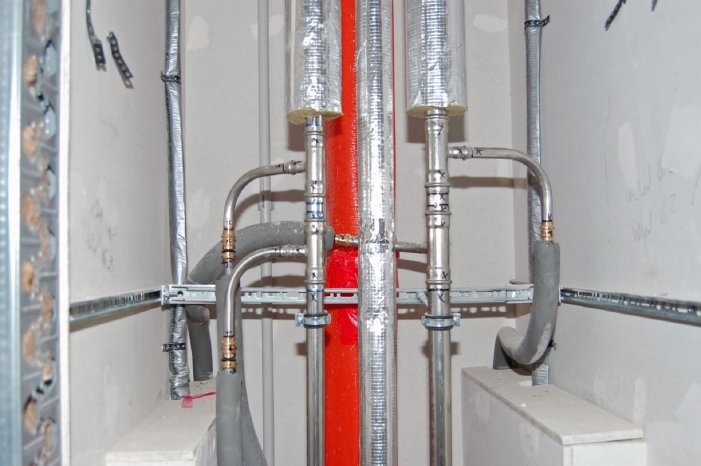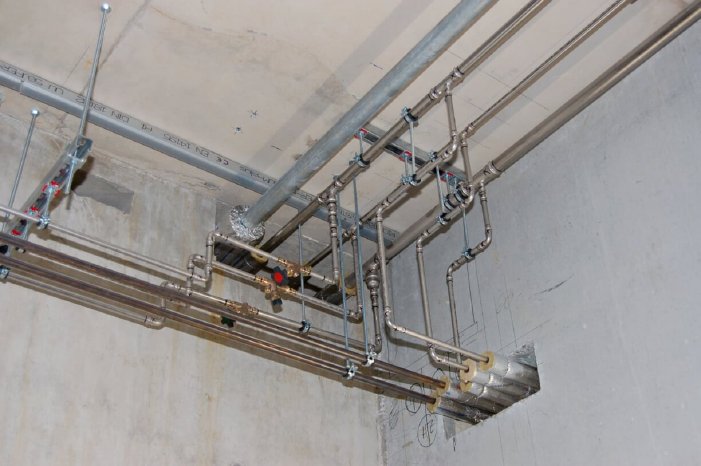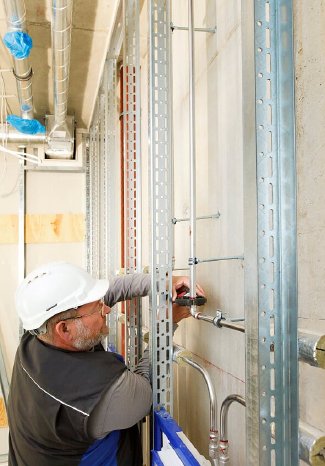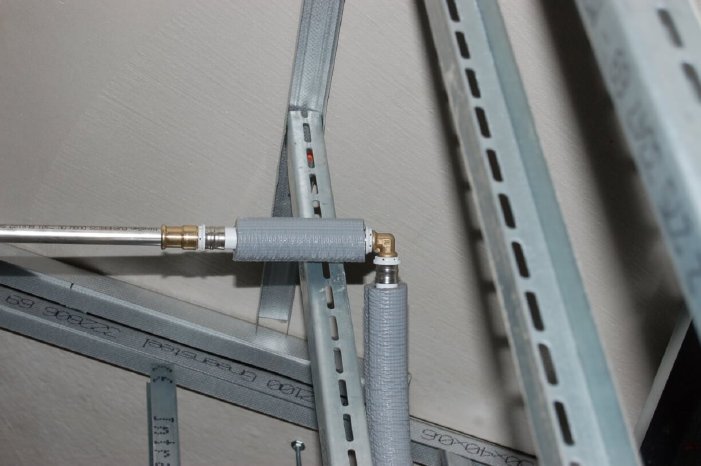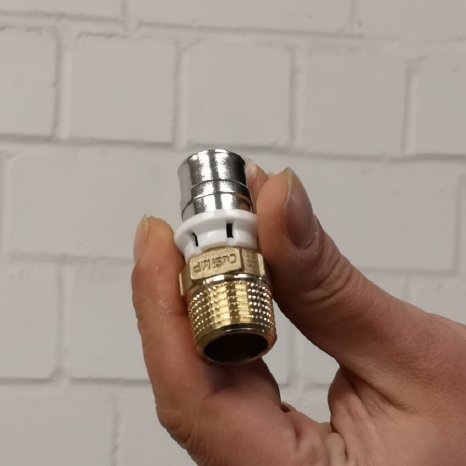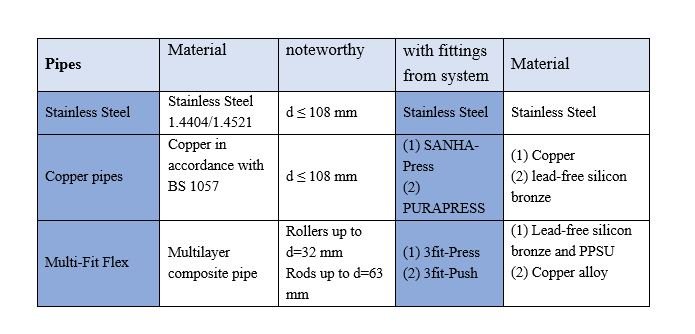The hygiene of potable water and its compliance with generally prescribed limits are sensitive and complex issues that must be taken into account in construction projects. In order to achieve a satisfactory and reliable result, it is necessary to set the course already during the planning phase. This is because the contractor, or the building owner and planner will bear the responsibility and can be called to account if problems or hazards arise. There are many reasons that can lead to quality losses, including the type of pipeline installation, the use of unsuitable materials, stagnation in less or unused pipeline sections, or inadmissible heating. By neglecting these factors in a potable water installation may lead to the growth of bacteria that may cause infections. A key point is the lead content of the water - in this case it is important to look closely at the limit value.
The following data on potable water quality contributes to the achievement of a high quality facility designed for safety and sustainability. After all, it must meet the functional requirements for a calculated service life of 50 years.
New = lead-free?
Newly constructed buildings may easily give the impression that the systems installed for drinking water are lead-free. Let's be clear; It's not the case. It is known that too much lead leads to health hazards, especially in unborn children, infants, and toddlers. In order to guarantee the quality of potable water, the lead content has therefore been limited to 0.01 mg/l by the Drinking Water Directive. Half of this quantity - i.e. a maximum of 0.005 mg/l - may be discharged by the water supplier. The second part could be entered by the domestic installation in purely mathematical terms. The limit value of 0.01 mg/l thus refers to the sum of the total lead input.
This contribution is non negligible: all components in contact with water after transfer to the building - from fittings and pipe connections to water meters, as well as the composition of the water can affect the lead content. The United Kingdom of Great Britain and Northern Ireland, France, the Netherlands and Germany have agreed in 2011 to harmonise the tests for the hygienic suitability of products and materials in contact with drinking water. This 4MS cooperation is now called the "4MS Initiative" (4MSI) with a view to expansion. The metallic materials on the 4MSI list form the basis for the products that will eventually be installed in buildings. According to the current status, the acceptable list also includes materials that contain a minimum amount of lead, for example as an alloy component or as an unavoidably accompanying element.
Drastic consequences
This results in the following: even if only products manufactured from the approved materials are installed, the limit value of 0.01 mg/l may still be exceeded. This could be due to the sum of the installed components, for example. In such a case, the water must no longer be used for drinking and food preparation and the search for the causes and the remedy will then follow - a complex and possibly costly process.
A tightening of the limit value is currently being discussed. This would have the effect of further reducing the amount of lead that can be introduced by all components. If half of this amount were to continue to be accounted for by domestic installations, the lead problem could become more acute.
The solution: lead-free
This problem can be avoided by choosing lead-free components from the point of transfer of the water supplier to the domestic installation. Many system fittings made of lead-free silicon bronze (CuSi) in different series are available today. As they do not contain the undesirable element, they do not release any into the drinking water. This is proven by the numerous certifications of the quality manufacturer such as SANHA. The high-quality stainless steel components are also suitable for lead-free installations. The table below provides information on possible combinations.
Further material properties
In addition to the "lead-free" aspect, the material quality also plays a role. Silicon bronze is extremely resistant to dezincification and stress corrosion cracking. Thanks to its extremely pure surface and resistance to dezincification, the PURAPRESS fitting series from SANHA, for example, represents a very hygienic premium solution. The high material density also means there is no casting porosity. If the components are professionally installed, the result is a high-quality potable water system. There are other important aspects to consider during the planning stage.
Minimise stagnation times
A demand-based design ensures that a sufficient change of the water in the system can already take place during normal operation. The content of a drinking water system should ideally be exchanged after a maximum period of 72 hours.
The prerequisite for this is an exact pipe network calculation, whereby the actual individual resistances and a simultaneity adapted to the user behaviour must be taken into account. Instead of a T-installation, the tapping points are now connected in loops. Regularly used tapping points can be arranged at the end of this loop installation. Alternatively, an entire floor line can be designed as a ring line. Both installation methods ensure excellent water distribution in the floor pipes by means of a flexible and low-connection pipe installation. For low pressure loss installation, flow-optimised elbows, T-pieces and threaded connection parts, wall angles or wall discs as well as double wall discs made of silicon bronze and stainless steel are available.
Spacing and insulation
The temperatures of cold and hot water pipes must be limited by proper installation and insulation to prevent bacterial growth. Important measures are: sufficient distance between the cold water pipes and heat-carrying installations, no penetrations through heating screeds and separate shafts for risers. This guarantees that cold water is heated up to a maximum of 25 °C and hot water not below 55 °C. These values apply to all parts of the system.
Clean products - clean processing
In addition to the material, the handling of the products has an effect. Thus, quality-oriented companies ensure that the parts in contact with water are carefully protected after production.
The pipes are fitted with sealing caps and the fittings are packed hygienically in protective bags. The caps and the fittings are only removed from the protective bags directly before installation. The contractor inspects all components for cleanliness before installation.
In case of interruptions during installation, open pipe ends must be securely closed. This is to limit the quantity of dirt particles and moisture that may penetrate the installation as much as possible. The former could form a breeding ground for micro-organisms, while moisture in combination with oxygen may lead to corrosion in base metals.
Leak test and proper transfer
A leak test must be carried out before insulating the pipes and closing the cut-outs. Last but not least, contractors and installers are obliged to hand over the drinking water installation to the user and to familiarise him with all hygiene and safety-relevant operations of the system.
Then the drinking water system can be permanently operated as safely as it was planned, installed and tested.


